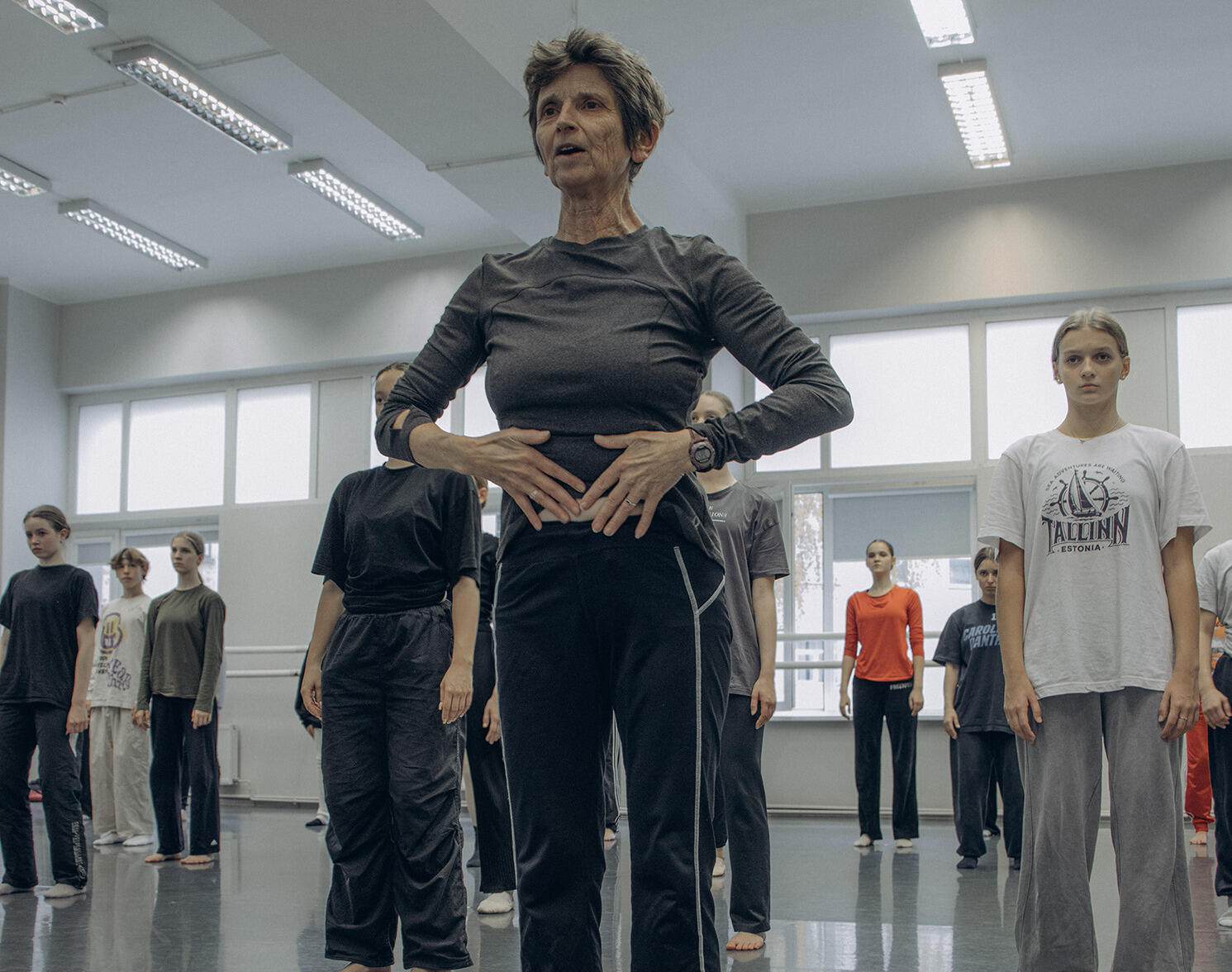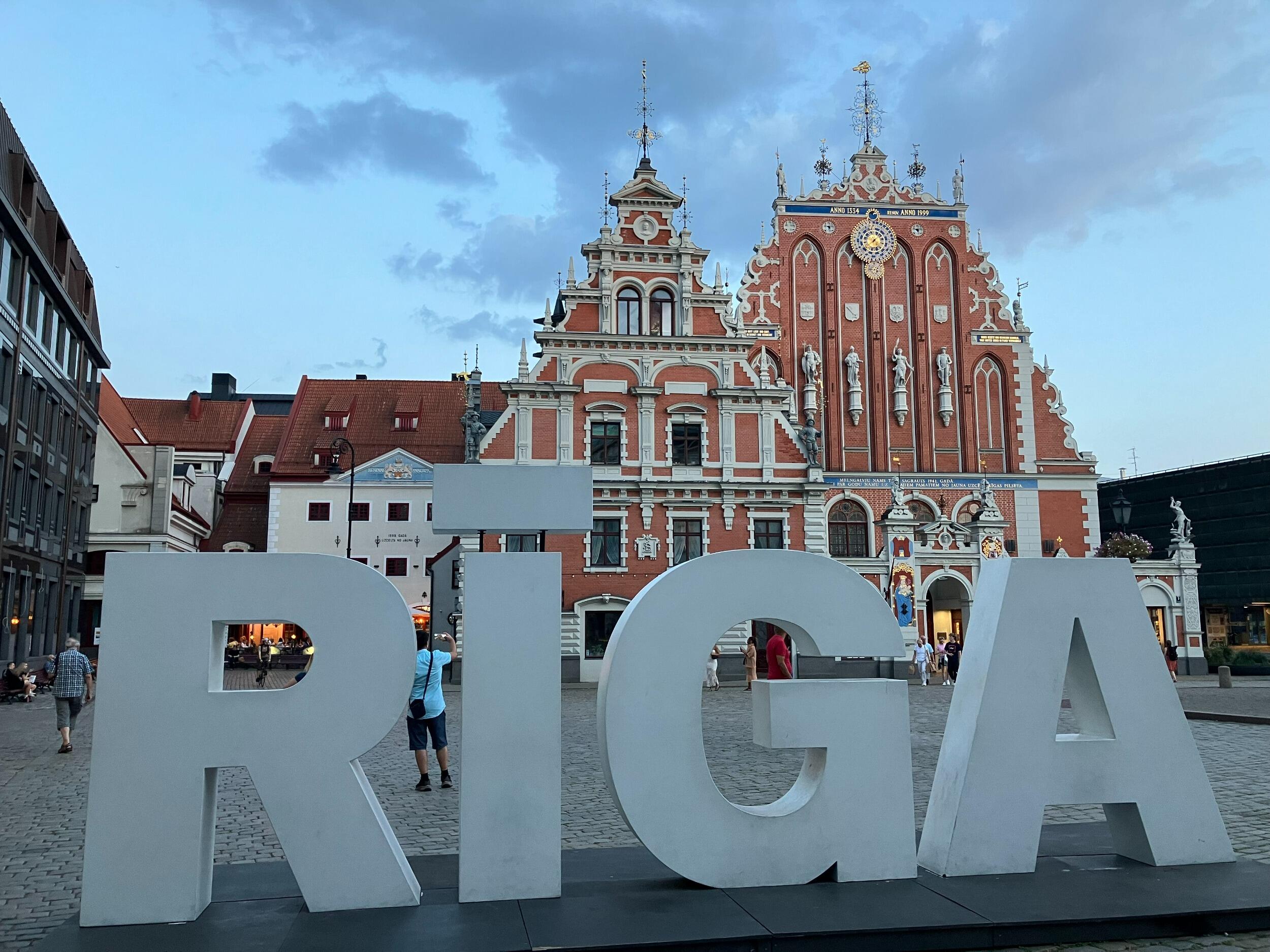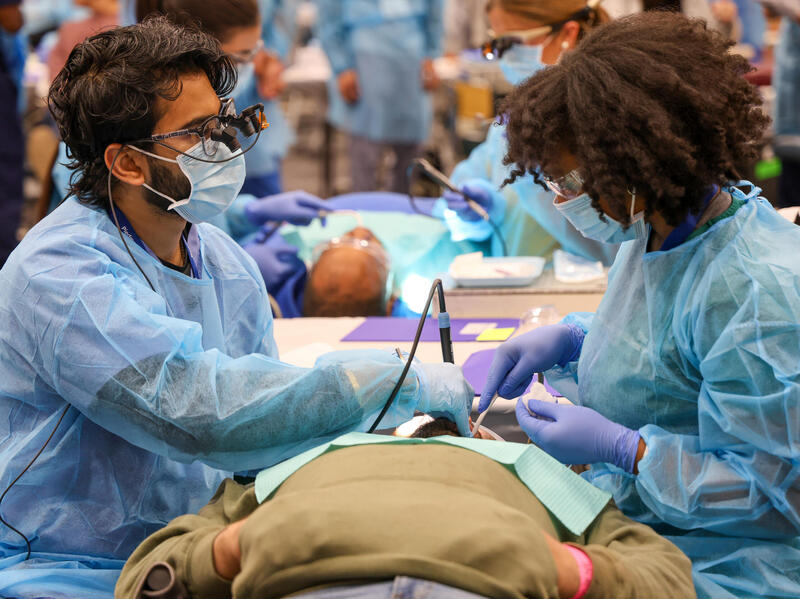
Feb. 3, 2025
Judith Steel danced her way into the hearts of her students in Latvia
Share this story
Judith Steel made a slew of cultural discoveries during her trip to Latvia last year, including learning that an American dance icon played an influential role in the country’s culture in the 20th century.
Steel, an associate professor in the Department of Dance and Choreography in the Virginia Commonwealth University School of the Arts, spent last fall semester teaching dance and movement in the capital city of Riga as part of the fellowship she earned through the Fulbright Scholar Program. She learned as much as she could about the country’s history and culture during her three-month stay, and one of her favorite stories involved Isadora Duncan, an American pioneer of modern dance whose radical work influenced European societies, including centers of art in Riga, Paris, Berlin and Moscow.
“All the movers and shakers back then came through Riga,” Steel said. Her flat overlooked remnants of a 1920’s building called Cafe Paris. “Inside, there are portraits of dancers trained by Isadora wearing Greek tunics that illuminated the new artistic development of modernism and natural movement or ‘artistic dance,’” she said.
During her time in Riga, Steel was invited to teach a contemporary approach to dance technique at the Jāzeps Vītols Latvian Academy of Music, housed in a 100-plus-year-old building that resembled a “castle” with chandeliers and massive hallways, she said.
Even though ballet is the main discipline at the academy, students also studied contemporary dance, composition, choreography and anatomy.
“I quickly discovered there are strict categories, and they don’t traditionally cross the line,” Steel said. “Only in recent years have they had contemporary dance and that was because of influences from the U.S. and Europe.”
Steel taught an embodied approach to movement, an approach that was relatively new to her students.
“I came with every tool I knew,” she said. “I did introduce them to lots of things. My approach was a novelty, working to integrate how the body is structured, how to tap into creative expression, then how to shape movement into full physicality rather than focusing on the extrinsic form of a particular style of dance and they appreciated that.”
Students in her classes were very focused and disciplined. During the country’s history of occupation, there was a very formal, structured and top-down approach to teaching and learning, Steel said.
“They are still looking to authority figures for the answers, and I wasn’t prepared for that,” she said. “Students can be guarded and reluctant to have a discussion.”

Steel emphasized the concept of openness where there was no one right answer.
“I think they were able to enjoy themselves more because of that,” she said. “I think everybody had a unique experience because the students had not experienced an approach like that before.”
Her students appreciated learning about the body and how it creates different movements.
“It’s very much about experiential learning,” Steel said.
Since the school’s foundation rests in ballet, she found herself referring to ballet form during her classes “because that is what they know,” she said, noting that her only regret during her three-month stint in Riga was not having enough time with students on a weekly basis so she could “dig really deep with them.”
Steel spent her time outside the academy visiting museums, markets and walking through the streets. She even went to the zoo.
“They are really keen on nature. There were flowers everywhere,” she said. “The city is spotless. There was no litter anywhere.”
At times, she felt like she was in Paris, she added.
“The city is quite exquisite and the people are very stylish,” she said. “It’s a very gracious country but very reserved. I think that is the national profile.”
Communicating with people in the city was sometimes difficult for Steel because she would hear Russian, Latvian and English all in the same conversation.
“I had to be creative in how I was communicating,” she said. “It was good to be a movement artist, as movement served as non-verbal communication.”
Her Fulbright experience also included opportunities to teach outside of the academy. The U.S. Embassy in Riga has a program called “Meet America” where it sends Fulbright recipients to meet students, speak to organizations and interact with the local population.
Steel was asked to teach a dance workshop in a Russian-speaking high school.
“When I arrived, I learned they love ‘K Pop’ and dance to American music with English lyrics,” she said. “I tried my best to offer something different but also fun to do. We improvised, worked with partners and danced to some good rhythms. I think they enjoyed it.”
In addition, Steel’s students presented a performance in collaboration with the Academy’s Jazz Music Ensemble.
“It was a huge learning experience, with dancers and musicians together shaping their performances in a concert open to the public. It was a lot of fun,” she said, adding her three months in Latvia went very quickly. “It was a great cross-cultural experience.”
Subscribe to VCU News
Subscribe to VCU News at newsletter.vcu.edu and receive a selection of stories, videos, photos, news clips and event listings in your inbox.










